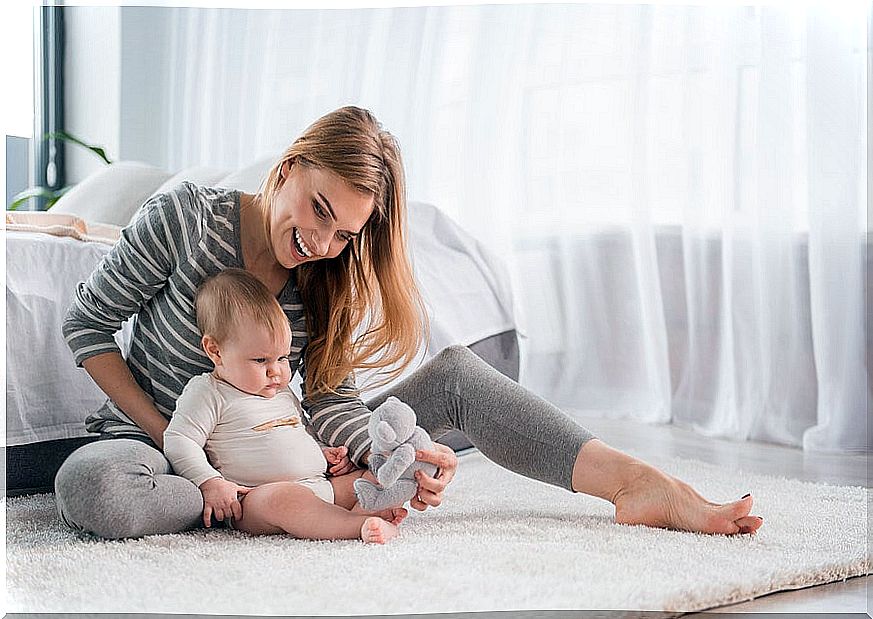5 Keys To Encourage Your Baby To Crawl
The first years of your baby’s life are full of exciting and magical moments. Every progress is a source of pride and celebration for parents. Therefore, you will surely want to encourage your baby to crawl.
Babies begin to crawl between 7 and 9 months. This happens naturally when the baby is ready to do it. You don’t need anyone to teach you how to do it. However, parents can help stimulate the movements that will propel the baby to its first crawl.
Crawling is considered the first great achievement of psychomotor development. It is the first gesture of independence of the human being. For the first time, that little person can move from one place to another on his own. At that moment a whole world of discoveries begins.
Types of crawling

Not all babies crawl the same. There are four different ways of crawling, and although some seem more rudimentary than others, it does not mean that one baby is more advanced than another because of the way they crawl.
There is a crawling that more closely resembles crawling. In this case, the baby does not lift the body but moves forward by propelling itself with the arms. Something like a soldier crawling.
There is another similar way to the previous one, but in this case the baby raises his torso completely with his hands on the floor and propels himself with his arms only, keeping his legs extended.
The most conventional or known form is the crawling with arms and knees. The baby stands on all fours with his knees and arms on the floor. Finally, some babies lift their torso completely by leaning on their hands and feet.
How to help your baby crawl?
1. Let them play face down

Babies are usually sitting up and sleeping on their backs. Putting them upside down for a while when you are awake will stimulate certain movements, such as lifting your head.
They may not feel comfortable initially. If so, put them on their stomach for short periods of time and try several times until they get used to it. You can give him some baby-safe toys to distract them. You can also lie on your back and lay the baby face down on your chest.
2. Challenge them to move
When the baby is more comfortable on his tummy, put a toy, preferably his favorite, a little out of his reach. This will give them a motivation to move. Although he may look a bit frustrated at first, don’t hold the toy close to him. Baby will improvise ways to reach it and eventually crawl to do it.
3. Crawling with your baby
Babies learn through observation. If they see someone crawl, they will know that this is a possibility. This does not mean that they will crawl as soon as they see someone do it, but it will help them to know that they are capable of doing it and it will give them clues on how to do it.

4. Hanging toys
Hanging toys over the baby when he is lying on his back helps to strengthen his arms and abdominal muscles. The baby will be attracted to the colors and the movement of the mobiles and, when trying to reach them, he will be exercising the muscles that he will later need to crawl.
5. Help him balance
Roll up a towel or sheet and place the baby face down with the towel at the height of his abdomen and chest. Slowly lift the towel so that the baby’s torso rises. He will instinctively put his hands on the ground. When it does, rock it back and forth slightly.
You can also do this exercise by lifting the baby with your hands on his hips.
What if your baby doesn’t learn to crawl?
Although most babies crawl before they walk or stand up on something, there are many who go straight from standing up on a sitting position to standing up with support. This is completely normal.
In any case, if you notice that your baby has some difficulty crawling, it is advisable to consult your pediatrician to find out if his motor progress is normal.









